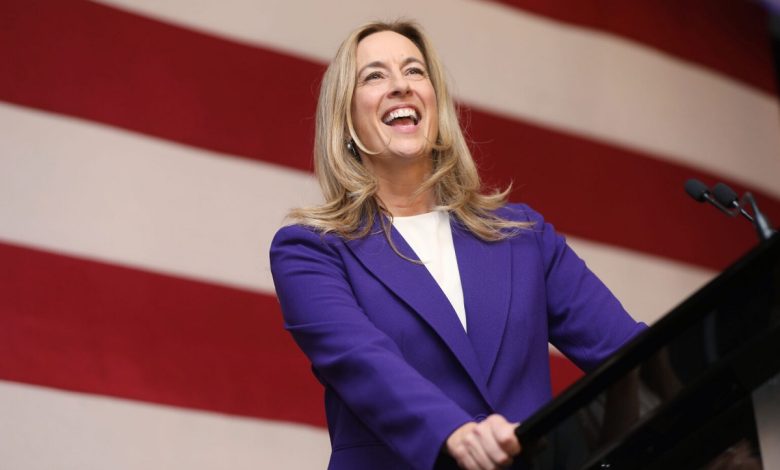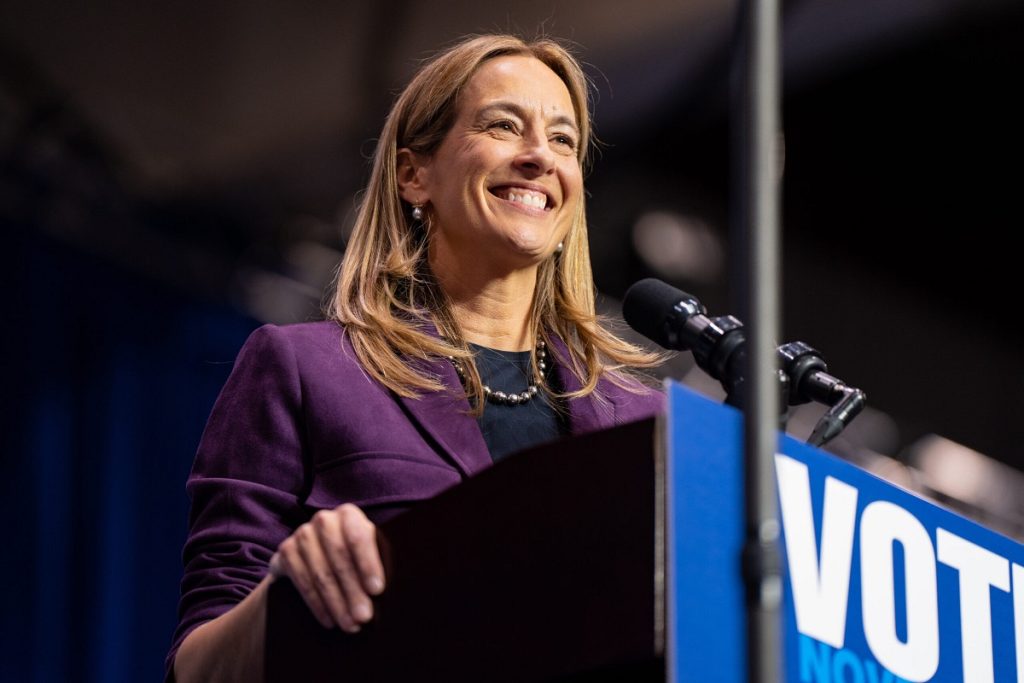New Jersey’s New Governor Mikie Sherrill Faces Deep Budget Crisis After Stunning Election Victory
Despite a decisive win, Governor-elect Sherrill inherits a $3 billion deficit, shrinking federal aid, and tough economic choices that could test her leadership from day one.

After an unexpected and decisive election victory, New Jersey Governor-elect Mikie Sherrill is now preparing to face a vast landscape of financial and budgetary challenges that threaten to overshadow her recent political success. Her victory — marked by outperforming poll expectations, flipping several counties, and eroding prior Republican gains — has placed her at the helm of a state grappling with deep economic realities.
Sherrill’s immediate task is addressing New Jersey’s structural budget deficit. The state currently faces a shortfall of about $2 billion, as expenditures exceed tax revenues. Historically, federal aid has acted as a critical stabilizer in balancing the budget. However, under the current federal administration, New Jersey has seen a sharp decline in government assistance, with hundreds of millions of dollars already withheld. Projections suggest the deficit could surpass $3 billion, particularly with anticipated cuts to Medicaid funding.
Government and policy experts describe this situation as a “poisoned chalice”, indicating that the new governor will likely face the unpopular choice of imposing tax increases while simultaneously cutting essential public services to overcome these financial constraints. Such measures are widely expected to generate public backlash, creating an early test of her leadership and political mandate.

Despite the daunting fiscal outlook, Governor-elect Sherrill has reaffirmed her mandate from voters to address affordability — the cornerstone of her campaign. She has pledged to tackle rising electricity bills, expand affordable housing options, and reduce daily living costs, including groceries and household expenses. The challenge will be reconciling these ambitious promises with the grim fiscal outlook and reduced federal support.
The New Jersey governorship is one of the most powerful executive positions in the nation, granting broad authority over appointments — including the state attorney general — and significant influence in the budget process. The governor presents the budget proposal each February and holds line-item veto power over legislative allocations, allowing substantial control over state priorities. Yet, this power comes with heavy responsibility, as the governor typically bears the brunt of all statewide problems.
Previous administrations faced criticism for failing to curb state spending in anticipation of reduced federal funding, despite heavy investments in areas such as public employee pensions and education. This underscores the intractable nature of many of New Jersey’s fiscal problems. The state’s model of “high taxes and high services” presents a dilemma: residents want lower taxes but are reluctant to sacrifice public services. Similarly, while there is a call for more affordable housing, existing homeowners are hesitant to see their property values decline.

The specific mechanisms by which Sherrill plans to implement her affordability policies, such as freezing energy price hikes, remain largely undefined. Questions persist over the executive authority to enact such measures. Additionally, shifts in federal policy — including cuts to clean energy incentives — will require a strategic rethink of the state’s approach to renewable energy development.
Adding to her strategic advantage, Sherrill’s victory coincided with a “blue wave” that delivered her party a commanding majority in both chambers of the state legislature. This strong political alignment could help her push through key legislative priorities. However, analysts broadly agree that New Jersey and its new governor are heading into a period of significant hardship, marked by likely federal tensions, declining state revenues, and an era of fiscal austerity.
The coming years are expected to be lean, demanding innovative solutions and strict financial discipline from Sherrill’s administration to stabilize the state and maintain public confidence.



